Louis Clemens Spiering (1874-1912)
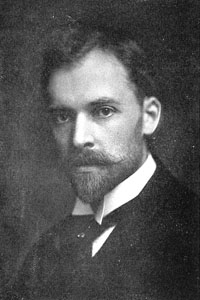 |
| Louis Clemens Spiering circa 1910. |
After graduating from the Real-Gymnasium in 1891, he remained in Berlin to attend two semesters of architectural study at the Royal School of Technology. After Spiering returned to the United States in 1892 for practical office experience in the Chicago firm of William A. Otis, he studied drawing and water color at the Art Institute in the evenings.
In 1895, he set off for Paris where he passed the rigorous entrance exams for l'École des Beaux-Arts. His next seven years would be spent in Europe. In addition to prize-winning work in the Beaux-Arts atelier (studio) of Marcel Lambert (architect in charge of restoration at Versailles), Spiering won a prize in sculpture at l'École des Arts Décoratifs. A successful thesis project, "A Mansion for a Rich Amateur of Music," added his name in June of 1902 to the small society of American architects with a complete Beaux-Arts education.
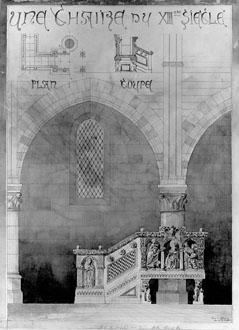 |
| Spiering completed this drawing for a 13th century pulpit for the Cathedral of Louvigal circa 1900 while at the Ecole. |
An article published a month later in the St. Louis Republic announcing Spiering's decision to return to St. Louis to work on the World's Fair with Chief Designer E. L. Masquerary noted: "Mr. Spiering, so far as known, is the only St. Louis architect holding a diploma from the Beaux-Arts. There are twenty such in America."
For a year and a half Spiering worked on the gardens, bridges and general layout of the Exposition grounds. He designed the restaurant pavilions and colonnades on Art Hill, the Horticulture Building, the "Palais du Costume," the Wireless Telegraph Tower and was Superintending Architect for the French and Austrian governments' exposition buildings.
In December 1903, he opened his own practice and set up a design atelier at Washington University's fledgling program in architecture. Opposed in general to the proliferation of schools of architecture, the American Architect, the profession's most influential journal, chastised the University for its daytime program of five students but applauded Spiering's evening classes for working draftsmen: "We believe that this is the first instance of a college department undertaking, in an organic way, work which is usually left to the uncertain care of the architectural clubs and draughtsmen's societies."
Gradually, Spiering became more involved in the daytime program. Girlish swoons recorded in Student Life document the effect his lectures had on part of the general student body.
In 1905, Spiering and Professor Frederick M. Mann, the MIT-trained head of the architecture program, entered a competition for the Missouri Supreme Court building but came away with only $350 and third prize. The first prize of $1000 was awarded to Mariner & LaBeaume; the second, $500, went to Frederick C. Bonsack.
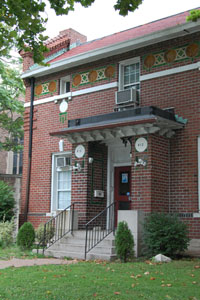 |
St. Louis Artists Guild, 812 Union |
In 1907, when Spiering received an important commission to design a new building for the Artists Guild, family connections may have played a role. His aunt, Thekla Bernays, was a charter member of the Guild, a member of the Arts & Crafts jury for the Fair and a well-connected journalist.
Sometime in 1908, Spiering formed a brief partnership with George W. Hellmuth. The firm's entry in that year's competition for the Soulard Branch Library won first prize. But when an exhibit of all twenty-one designs went on display at the Artists Guild, twelve of the entrants protested, saying that the rules (or program) for the competition stipulated that only india ink could be used for presentation drawings. Spiering, who was responsible for the drawing, insisted that all shadings were indeed india ink.
The firm kept the job but the partnership dissolved leaving Spiering to complete the work. Spiering himself handed over the key to the building, which still stands on Lafayette across from the Soulard Market, at the opening ceremonies on 21 March 1910. Abandoned as a library at a lowpoint in the history of the Soulard neighborhood in 1962; it has housed a series of restaurants and bars.
The first mention of what would prove a fatal illness (intestinal cancer) had already appeared by the time the library building was completed. In October 1910, a report appeared that Spiering was still convalescing from a January bout with an unnamed illness.
Sometime during that period he created a now-lost, monumental pencil and pastel panorama titled, "The Architectural Apotheosis of St. Louis" which traced the city's buildings "from Indian tents along a lonely river to the magnificent World's Fair buildings and daring predicted structures yet to come."
In 1911, he resigned from Washington University in order to devote what energy he had to his final commission: the Sheldon Memorial Building for the St. Louis Ethical Society. His resignation occasioned the following tribute: "...a man of rare culture and ability...through his teaching he has advanced the standard of draftsmanship materially. Nearly every good draftsman in the city is a disciple of his."
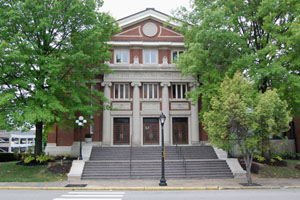 | 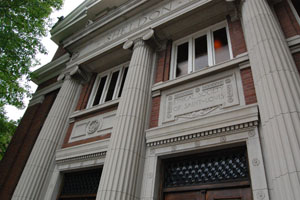 |
| Sheldon Memorial, 3646 Washington Avenue |
In November 1912, Spiering resigned his position as professional adviser to the new State Capitol competition in Jefferson City. He died on March 8 of that year. The Ethical Society's April newsletter carried the touching funeral address which began: "If he wrought not much, he wrought wondrously well." *(updated 3 Oct 2016 with corrected cause and date of death.)
